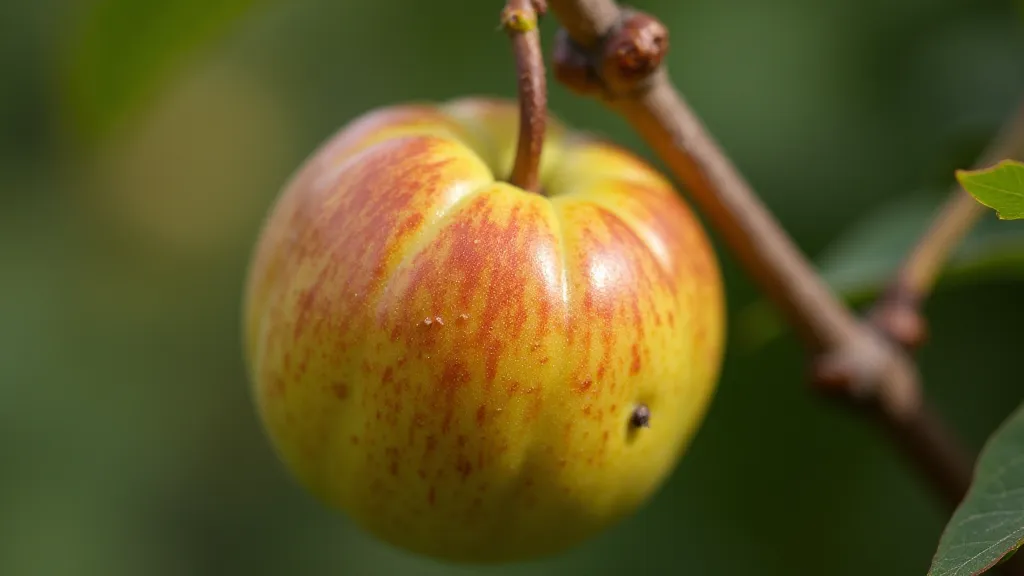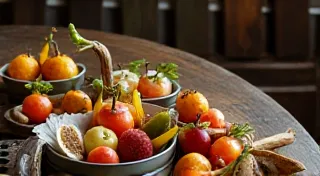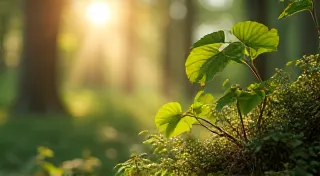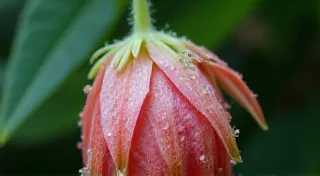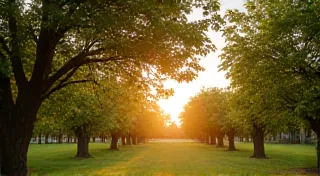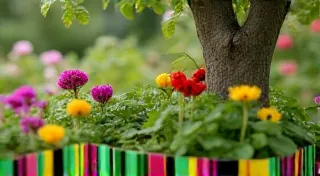The Lunar Orchard: Harnessing Natural Rhythms for Abundant Yields
There's a quiet magic to fruit growing, a profound connection to the earth that transcends simply planting a seed. It's a conversation, a dance between the gardener and the land, a partnership built on observation and respect. I remember my grandfather, a stoic man of few words, pointing to the silver sliver of a waxing moon and saying, “The trees listen to her, you know.” I didn't understand then. Now, after years spent coaxing life from my own little orchard, I do. It's more than just knowing when to prune or fertilize; it’s understanding the subtle rhythms that govern life itself. And a fascinating, often overlooked piece of that rhythm is the moon.
My journey into unconventional fruit growing wasn't a sudden conversion. It began with a yearning for something different – a rejection of the homogenous, often bland, offerings found in supermarkets. I wanted flavors that whispered of history, textures that surprised, and a tangible link to the past. That’s when I stumbled upon the world of heirloom fruit varieties – forgotten treasures brought back from the brink of extinction. It’s not just about the fruit itself, but the stories they carry. The 'Roxbury Russet' apple, once the most popular apple in America, almost vanished. The 'Arkansas Traveler' peach, beloved by pioneers, was a lifeline for families forging new lives in the American West. Each bite becomes a connection to that history, a taste of resilience and ingenuity.

The appreciation for these antique varieties echoes something I feel for antique accordions. My father collected them. Not for their musical value, necessarily, but for their artistry. Each button, each reed, each meticulously crafted piece of wood spoke of a time when things were built to last – built with a love and dedication rarely seen today. Restoring one isn't just fixing a broken instrument; it's preserving a piece of history, understanding the hands that shaped it, and appreciating the skill involved. Similarly, growing unusual fruits isn’t simply about planting a tree. It’s about nurturing a legacy.
The Lunar Influence: More Than Just Folklore
The idea that the moon impacts plant growth isn’t some New Age fantasy. While modern science often dismisses some of the more esoteric interpretations, there’s growing evidence, and centuries of traditional practice (particularly in biodynamic agriculture), to suggest a real connection. The moon's gravitational pull influences tides – a powerful force – and it's logical to assume it affects water movement within plants as well. Biodynamic farming, pioneered by Rudolf Steiner, uses lunar calendars to determine planting and harvesting times, aligning these activities with the moon’s phases and constellations. While the precise mechanisms are still being researched, the results – observed by countless farmers over generations – are compelling. This holistic approach considers the interconnectedness of the entire farm ecosystem, a principle that extends beyond just the fruits themselves and deeply influences the land's vitality. Many gardeners are also finding value in strategies for harvesting wild fruits responsibly, such as those described in The Siren’s Bloom: Wild Fruit Foraging & Ethical Harvesting.
Generally, the waxing moon (from new moon to full moon) is considered a time for leafy growth – ideal for planting out seedlings, fertilizing, and encouraging vigorous leaf development. The full moon is often seen as a peak time for growth but can also be associated with increased pest activity. The waning moon (from full moon to new moon) is believed to be a good time for root development – perfect for transplanting bare-root trees and pruning. Some practitioners suggest the best time for pruning is during a waning gibbous moon (the phase just after the full moon), as this encourages growth from the remaining buds.
Beyond the Moon: Biodynamic and Permaculture Principles
While the lunar calendar is a valuable guide, it’s only one piece of the puzzle. Biodynamic agriculture takes a holistic approach, considering the entire farm ecosystem – soil health, animal integration, and the influence of surrounding landscapes. Compost preparations, made from specific herbs and minerals, are applied to the soil according to lunar cycles to enrich its vitality. Companion planting – strategically placing different plant species together to benefit each other – is another key principle. For example, planting nitrogen-fixing legumes alongside fruit trees can improve soil fertility. Water management is also critical to overall orchard health, often involving intricate and innovative approaches; you might find inspiration in The River’s Bounty: Integrating Orchards with Water Management Systems.
Permaculture, with its emphasis on creating self-sustaining systems, offers another framework for orchard design. Mimicking natural ecosystems, a permaculture orchard might include a diversity of fruit trees, shrubs, vines, and ground cover plants, all working together to support each other. Creating guilds – groupings of plants that offer mutual benefits – is a common permaculture technique. A ‘peach guild,’ for instance, might include nitrogen-fixing clover, insect-attracting flowers like borage, and rosemary to deter peach borers. The principles of companion planting are central to permaculture design, helping to maximize yields and enhance the overall health of the orchard. Many gardeners find that strategic planting helps to foster a healthier and more resilient ecosystem.
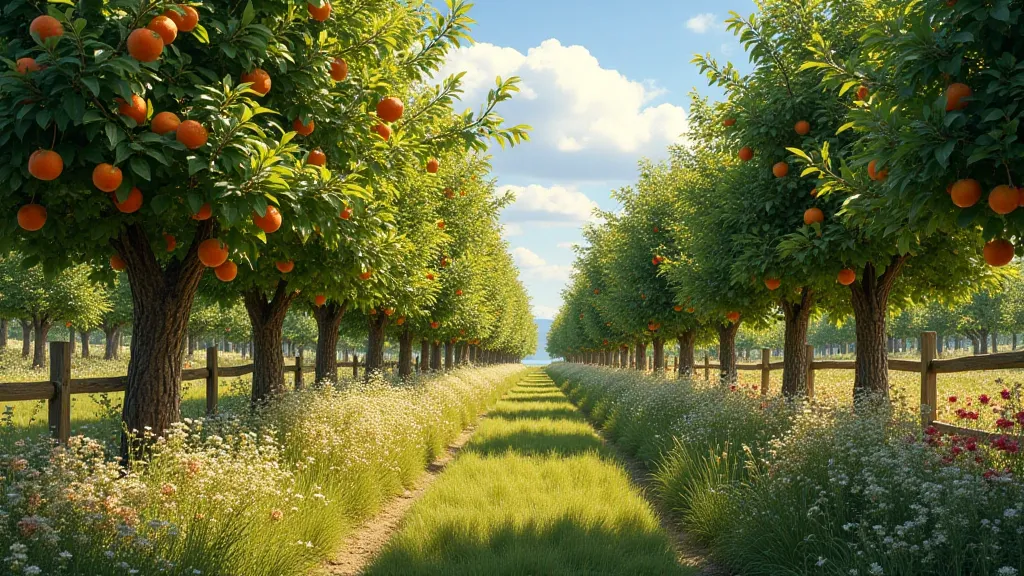
Cultivating Unusual Fruits: A Few Suggestions
So, what unusual fruits might you consider for your own backyard orchard? The possibilities are vast. ‘Arkansas Traveler’ peaches offer a delightfully sweet and juicy flavor. ‘Quince’ – often overlooked – makes exceptional jellies and preserves. ‘Medlar’ – a medieval fruit that ripens to a soft, almost fermented state – is a unique culinary experience. ‘Persimmon’ – with its honeyed sweetness – is a fall favorite. And for a truly exotic touch, consider a ‘Mulberry’ – a fast-growing tree that produces clusters of dark, luscious berries. Successfully cultivating these unusual fruits requires more than just understanding lunar cycles; it demands a thorough understanding of their individual needs and a commitment to creating a thriving ecosystem. Understanding the subtle interplay of plants and their environment is key to achieving a bountiful harvest.
When selecting unusual varieties, research their chill hour requirements (the number of hours below a certain temperature needed for proper fruit set) and make sure they are suitable for your climate. Don’t be afraid to experiment! Growing uncommon fruits can be challenging, but the rewards – the unique flavors, the connection to history, the satisfaction of nurturing a rare treasure – are immeasurable. It’s about more than just the fruit; it's about the journey, the learning, and the quiet reverence for the natural rhythms that govern life. One way to deepen this understanding is by exploring the intricate relationships between plants and their environment, striving to replicate the natural harmony found in thriving ecosystems.
The techniques and strategies used to nurture these antique varieties often mirror a broader philosophy of working *with* nature, rather than against it. Achieving a flourishing orchard necessitates a delicate balance of knowledge, observation, and a deep respect for the interconnectedness of all living things. One aspect often overlooked is the critical importance of creating a supportive microclimate, which can involve understanding and manipulating factors like sunlight, water availability, and wind protection. This can be achieved through careful planning of orchard layout and the strategic use of companion plants.
Thinking about the challenges of cultivating these unusual fruits, it becomes clear that success is not solely dependent on understanding the lunar calendar or the specifics of each variety. It also relies on a more holistic appreciation for the intricacies of the ecosystem as a whole. For example, understanding how different plants interact with each other, how insects contribute to pollination and pest control, and how soil health influences overall orchard productivity. This kind of integrated approach aligns beautifully with the broader principles of permaculture design, helping to create a self-sustaining and resilient orchard ecosystem.
Many gardeners have found that implementing companion planting techniques is essential for creating a balanced and thriving orchard. By carefully selecting plants that work together synergistically, you can create a microclimate that benefits all the plants in your orchard. As detailed in The Orchard’s Breath: Companion Planting for Enhanced Growth & Flavor, specific combinations of plants can help to attract beneficial insects, repel pests, improve soil fertility, and enhance the overall flavor of the fruit. Experimentation is key, and observing how different plants interact is a rewarding part of the process.
